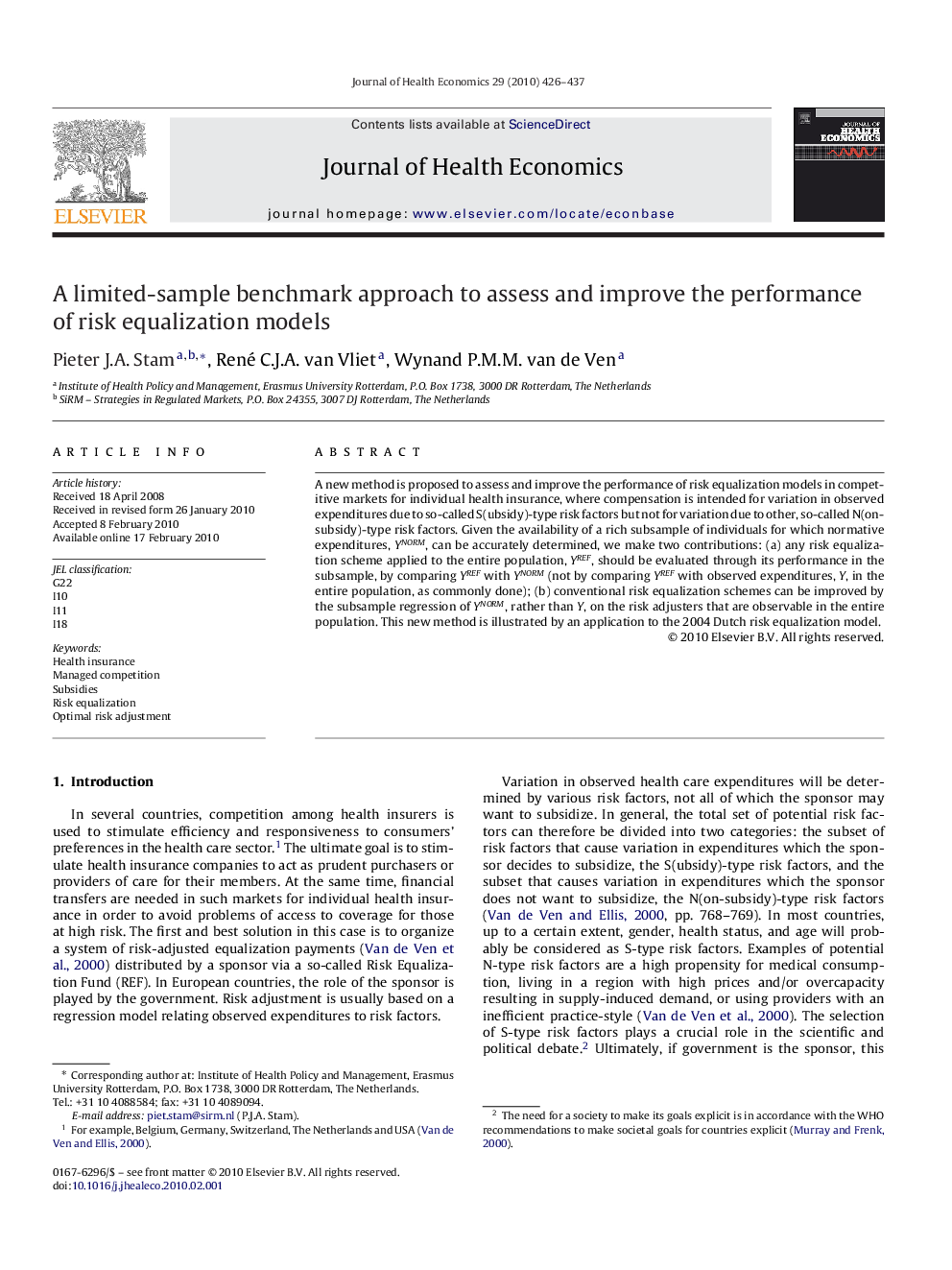| Article ID | Journal | Published Year | Pages | File Type |
|---|---|---|---|---|
| 961914 | Journal of Health Economics | 2010 | 12 Pages |
Abstract
A new method is proposed to assess and improve the performance of risk equalization models in competitive markets for individual health insurance, where compensation is intended for variation in observed expenditures due to so-called S(ubsidy)-type risk factors but not for variation due to other, so-called N(on-subsidy)-type risk factors. Given the availability of a rich subsample of individuals for which normative expenditures, YNORM, can be accurately determined, we make two contributions: (a) any risk equalization scheme applied to the entire population, YREF, should be evaluated through its performance in the subsample, by comparing YREF with YNORM (not by comparing YREF with observed expenditures, Y, in the entire population, as commonly done); (b) conventional risk equalization schemes can be improved by the subsample regression of YNORM, rather than Y, on the risk adjusters that are observable in the entire population. This new method is illustrated by an application to the 2004 Dutch risk equalization model.
Related Topics
Health Sciences
Medicine and Dentistry
Public Health and Health Policy
Authors
Pieter J.A. Stam, René C.J.A. van Vliet, Wynand P.M.M. van de Ven,
